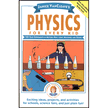 Cold Light vs. Hot Light
Cold Light vs. Hot Light
Luminescence is “COLD LIGHT.”Cold light is light that usually occurs at low temperatures. Luminescence can be produced in many different ways. Follow are just a few examples:
chemical reactions: One example is a Glow Stick. A glow stick contains two solutions. The stick is a flexible tube. Inside this tube is one of the solution and a small fragile container containing the other solution. When the stick is bent, the fragile tube breaks, releasing its content which mixes with the solution inside the tube. After breaking, the tube (glow stick) is shaken to mix the two components. Voila’. Cold light is emitted.
electrical energy: Electroluminescence occurs when a material releases light in response to the passage of an electric current, or the presence of an electric field.
subatomic motions: One example is a glow in the dark object. High energy light energy, such as ultraviolet light, excites the electrons of phosphors in the object. When the electrons are de-excited, they give off visible light.
stress on a crystal: Piezoluminescence, cold light produced by the action of pressure on certain solids.
Incandescence is called “hot light,” because this light is produced when objects are hot enough to glow. For example, light from a burning candle, a burning match, or burning sparklers.
Incandescent light bulbs have a thin wire filament that is heated when an electric current passes through it. Most of the energy emitted by the hot filament is in the infrared part of the electromagnetic spectrum. Infrared radiation is often called also called thermal or heat light. Only a small percent of the emitted energy from the heated filament is visible light. This is true for all incandescent light, thus it is not an efficient means of producing light.
 |
Physics For Every Kids |